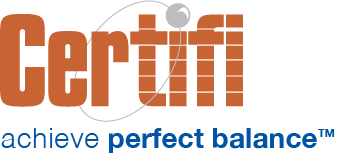We’ve had many conversations with large voluntary benefits insurers considering buying voluntary insurance billing software. Some insurers weigh purchasing a software solution against continuing to maintain – or build – an internal solution. Often, insurers have more than one internal billing solution after decades of mergers and acquisitions.
Build vs. buy is an age-old question for all organizations. In some cases, building makes sense. But often, buying makes sense. Here are ten reasons to purchase voluntary insurance billing software instead of using in-house resources to build and maintain a solution.
Save Time and Resources
Building a billing software solution from scratch is a time-consuming and resource-intensive process. It requires a significant investment in people, software development, testing, and ongoing maintenance. Billing can have many unique requirements that, unfortunately, many development teams discover through trial and error, causing insurers to underestimate the initial build time and ongoing maintenance costs. Purchasing an existing solution can save time and allow insurers to focus on their core business operations.
Save Money
In the past, many voluntary benefits insurers built their billing solutions because there weren’t commercially available solutions. Or, they believed they had unique requirements that off-the-shelf solutions couldn’t solve. As a result, insurers decided to build billing solutions internally.
But today, several solutions – including Certifi’s – meet the needs of the most demanding voluntary benefits insurers. Plus, because we sell our solution to a wide range of businesses, we learned the importance of configurability. As a result, we’ve overcome the “we have unique needs” argument.
Developing custom software involves substantial upfront costs for hiring developers, project management, and infrastructure setup. Purchasing a pre-built solution can be more cost-effective, with predictable subscription fees that deliver a better solution faster, usually at a reduced cost.
Expertise and Experience
Your product and development teams are likely experts at crafting and supporting voluntary insurance benefits plans. Software vendors specialize in creating solutions tailored to the insurance industry. They have the expertise and experience to address the unique billing challenges and compliance requirements voluntary benefits insurers face. Building an in-house system may lack the depth of industry knowledge.
Faster Implementation
Let’s be honest: It may take years to architect and build a new billing application. Depending on the requirements, it’s likely a two-year project at a minimum.
Consider that a lengthy implementation for us is six months. Insurers can implement ready-made billing software like Certifi more quickly than developing a custom solution, often at least a year faster. This speed-to-market advantage is crucial, especially when insurers need to adapt to changing regulations or market demands swiftly.
Scalability
Several insurers have approached us because they seek growth but fear their billing application won’t scale. Manual processes and rework due to dated design make it difficult to scale without adding more billing specialists. Those employees eat into profits.
Vendors design billing software solutions with scalability in mind so insurers can accommodate an expanding customer base. For example, Certifi uses Amazon’s AWS as a backbone. Because many billing tasks – generating billing transactions or creating invoices – typically occur once a month, using technology that can scale up computing resources for heavy loads and then scale them back down can limit costs while enabling massive scale.
One of our clients foresees quadrupling their volume in the next five years. We put our solution through a rigorous test to mimic those needs. Because we architected the system for scale, it easily scaled to meet that expected increase.
Integrated Features
There’s more to billing than just sending an invoice. You need to manage payments, connect the billing data to your general ledger, report on payments or delinquent accounts, and send delinquency notifications, among other tasks.
Many billing software solutions offer integrated features such as automated payment processing, reporting, and delinquency management. Building these features in-house would require additional development efforts, costs, and time.
Maintenance and Updates
Certifi operates on a two-week software development cycle that delivers frequent product updates and new features. For example, we’ve spent a considerable amount of time investing in a machine learning solution to improve the application of unknown payments which lead to a 4X productivity gain.
Building your solution means you own maintaining and updating the solution. Insurers often underestimate the time and resources required to manage ongoing maintenance and updates. Plus, your software will become less competitive if you fail to improve it over time.
Customer Support
No software is perfect. It doesn’t work as expected sometimes. When it doesn’t, you want support to help you understand and fix any issues. We’ve run into some insurers who developed billing solutions only to see team members leave. Some of the institutional knowledge exited with them, making it difficult to get a timely answer to a support request.
Billing issues can be critical and impact customer satisfaction. Most commercially available software solutions like Certifi include customer support and technical assistance backed by a service level guarantee. As a result, insurers can rely on vendor support to troubleshoot issues and receive timely aid when needed.
Focus on Core Competencies
As the old saying goes, if you try to do everything, you’ll do nothing well. Intelligent businesses focus on what they do well instead of trying to do everything themselves.
For voluntary insurers, using resources to develop billing solutions takes time away from core competencies like product development, customer service, and marketing. By letting experts like Certifi manage the billing technology, insurers can focus on the things they do well.
Risk Mitigation
As we mentioned, custom-built software projects often carry inherent risks, including delays, cost overruns, and potential technical challenges.
The beginning of ACA exchanges is a prime example. The federal government and several states tried to have well-known technology consultants build custom software to facilitate selling insurance to individuals. In most cases, cost overruns and delays led to a bad consumer experience that hurt the exchange movement. It wasn’t until governments turned to off-the-shelf solutions instead of custom-built technology that the exchange technology stabilized.
Purchasing a proven billing solution can reduce these risks.
While building a custom voluntary insurance billing software solution may seem attractive, the advantages of purchasing a pre-built solution outweigh the benefits of DIY development. It allows insurers to save time, reduce costs, benefit from industry expertise, and focus on what they do best: providing valuable voluntary benefits to their customers.
Certifi’s premium billing and payment solutions help voluntary insurers improve member satisfaction while reducing administrative costs.



